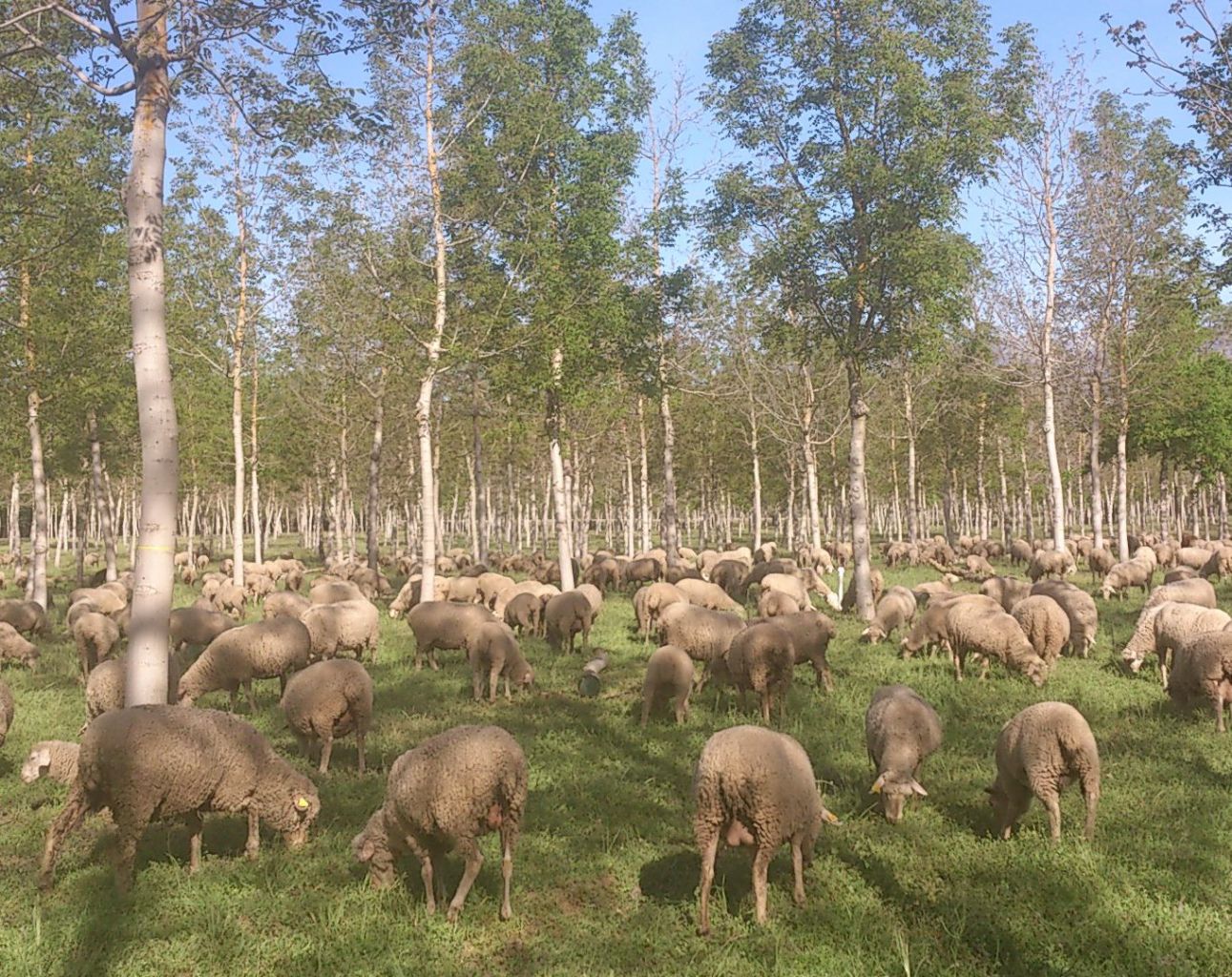
Pâturage et cultures intercalaires d'arbres en Espagne
Description du système
En Espagne, les vergers d'oliviers, d'amandiers et de caroubiers étaient soit pâturées, soit plantés de cultures intercalaires. Cependant, ces systèmes agroforestiers traditionnels sont devenus marginaux, et de nouvelles pratiques agroforestières, basées sur la plantation d'arbres de qualité tels que les cerisiers et les noyers sur des terres arables se développent. Ceux ci sont souvent gérés avec de hauts niveaux d'intrants. L'adoption de systèmes de systèmes de pâturages ou de cultures intercalaires dans des systèmes comme ceux-ci a le potentiel de créer des bénéfices économiques et environnementaux. Cependant, il y a généralement un manque de connaissances et d'informations sur les pratiques appropriées de gestion et sur les bénéfices d'une telle gestion, ainsi que sur ce qui entrave l'adoption de stratégies de gestion sur ces nouvelles parcelles reboisées.
Première réunion des parties-prenantes.
La première réunion des acteurs s'est tenue le 30 Mai 2014. Les parties-prenantes présentes à la réunion ont noté comme bénéfices les impacts sur l'environnement, la santé et le bien-être animal, ainsi que la bonne survie des arbres exposés au pâturage et aux cultures intercalaires. Par contraste, certains interrogés avaient une perception négative de ce qui concerne la gestion, les aspects économiques, et le poids administratifs. Des sujets de recherche potentiels incluent les conséquences bio-économiques de pâturer sous des arbres de bois d'oeuvre de haute qualité; l'utilisations de légumes; la pratique d'étêter les arbres; une sélection de céréales, légumes, et espèces d'herbes adaptées à l'ombre; et la réponse des céréales aux arbres voisins.
This webpage describes the results focused on grazing and intercropping with legumes. The results focused on cereal varieties are reported in work-package 4.
Si vous souhaitez en savoir plus sur les activités de ce groupe, veuillez contacter Gerardo Moreno gmoreno@unex.es, University of Extermadura, Spain.
Télécharger le rapport initial des parties-prenantes
Télécharger le rapport initial du protocole de Recherche et Développement
This stakeholder group has developed two research and development protocols. The first is focused on the use of grazing and legumes in walnut plantations; the second is focused on the pollarding of wild cherry.
Download the system description
A research update on the use of grazing and legumes in walnut plantations was produced in September 2015.
Lesson learnt
María Lourdes López-Díaz and colleagues at the University of Extremadura have summarised the lessons learnt regarding the grazing of high value walnut and wild cherry timber plantations in Spain. The overall results suggest that grazing in walnut and wild cherry plantations can reduce maintenance costs and environmental risks, without major effects on tree growth.
The first experiment compared the effect of cultivation, grazing, and mowing beneath walnut trees. The lessons learnt include:
- Grazing increased the density of pasture roots to a soil depth of 50 cm, compared to cultivation and mowing. There was some evidence that this increased the recovery of nutrients at depth and reduced the leaching of nitrate.
- Grazing did not favour the tree growth as much as cultivation but it gave better results than mowing.
The second experiment compared natural vegetation, natural vegetation with about 40 kg/ha of nitrogen, phosphate and potash, and the sowing of legumes (with phosphate and potash) beneath walnut trees. The lessons learnt include:
- The unmanaged annual pasture yield was around 3.5 t/ha which could support 0.6 livestock units per hectare.
- The sowing of legume forage increased the level of soil nitrogen and potassium but reduced the available phosphorus.
- Sowing rich-legume pasture in the alleys could roughly double the stocking rate without compromising the tree growth, and it improved carbon sequestration.
The last part of the report focuses on the thinning and pollarding of wild cherry trees. The lessons learnt include:
- Thinning had a slight but positive effects on the growth of individual trees for a period of three years.
- Pollarding had neither positive nor negative effects on tree diameter increment, but the level of cavitation was reduced.